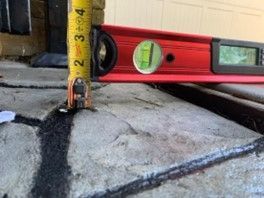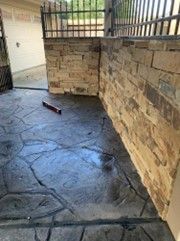Polyurethane Foam: The Innovative Solution to Fixing Sinking Concrete Patios
In the realm of concrete repair, innovative solutions are constantly being sought to address common issues such as sinking patios, uneven walkways, and the general degradation of concrete structures over time. One such revolutionary method involves the use of polyurethane foam, a technique that has been popularized by Ro-Berg Concrete Repair Specialist. This method not only offers a quick and efficient solution but also ensures durability and longevity. In this article, we delve into the use of polyurethane foam for fixing sinking concrete patios and outline ten signs that indicate underlying concrete issues.


Understanding Polyurethane Foam Injection
Polyurethane foam injection is a cutting-edge repair technique that involves injecting a two-part polymer (polyol and isocyanate) beneath the concrete. This mixture then expands, filling voids, stabilizing the substrate, and lifting the concrete back to its original level. The process is minimally invasive, requiring only small holes to be drilled into the concrete, through which the foam is injected. This method is not only quick, with the foam expanding in seconds and curing within minutes, but it is also incredibly durable, resistant to water, and less disruptive compared to traditional repair methods.
10 Signs of Concrete Issues
Cracks in the Concrete: Small cracks can be an early indication of underlying issues, often worsening over time if not addressed.
Uneven Surfaces:
If your patio seems uneven or slopes in certain areas, it’s a sign the ground beneath has shifted or settled.
Pooling Water: Water gathering on your patio after rain can indicate unevenness or depressions in the concrete, which could lead to further damage.
Sinking Sections: Parts of your patio may appear lower than others, indicating that the concrete has sunk into the ground.
Expansion Joint Separation: If the expansion joints between concrete slabs are pulling apart, it's a sign of movement and instability.
Visible Erosion: Erosion around or under the patio can lead to voids, causing the concrete to sink or become unstable.
Crumbled Corners and Edges: Deterioration around the edges or corners of the concrete slabs can signify deeper issues.
Lifting: Opposite to sinking, lifting can occur due to tree roots or freeze-thaw cycles, indicating that the patio is not stable.
Crackling Sound: Walking on the patio and hearing a crackling sound beneath your feet could mean there are voids under the concrete.
Age and Wear: Simply the age of your patio and visible wear and tear can be a sign it's time for an inspection and possibly a repair.
The Benefits of Using Polyurethane Foam
Choosing polyurethane foam for concrete repair offers numerous benefits. The quick cure time means that the area can be used almost immediately after repair. Its lightweight nature doesn't contribute to further soil compression, and its durability ensures a long-lasting solution. Additionally, the process is environmentally friendly, with the materials used being inert and not leaching harmful chemicals into the soil.
CONTACT INFORMATION
Phone: (281) 706-0474
Email: luke@ro-berg.com
Location: We serve Houston and the surrounding area. (Offices in Alvin)
All Rights Reserved | Ro-Berg
